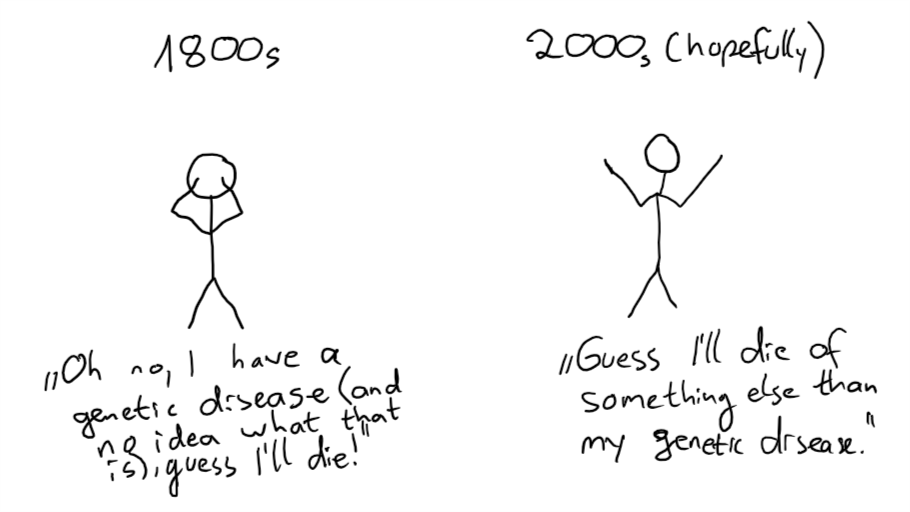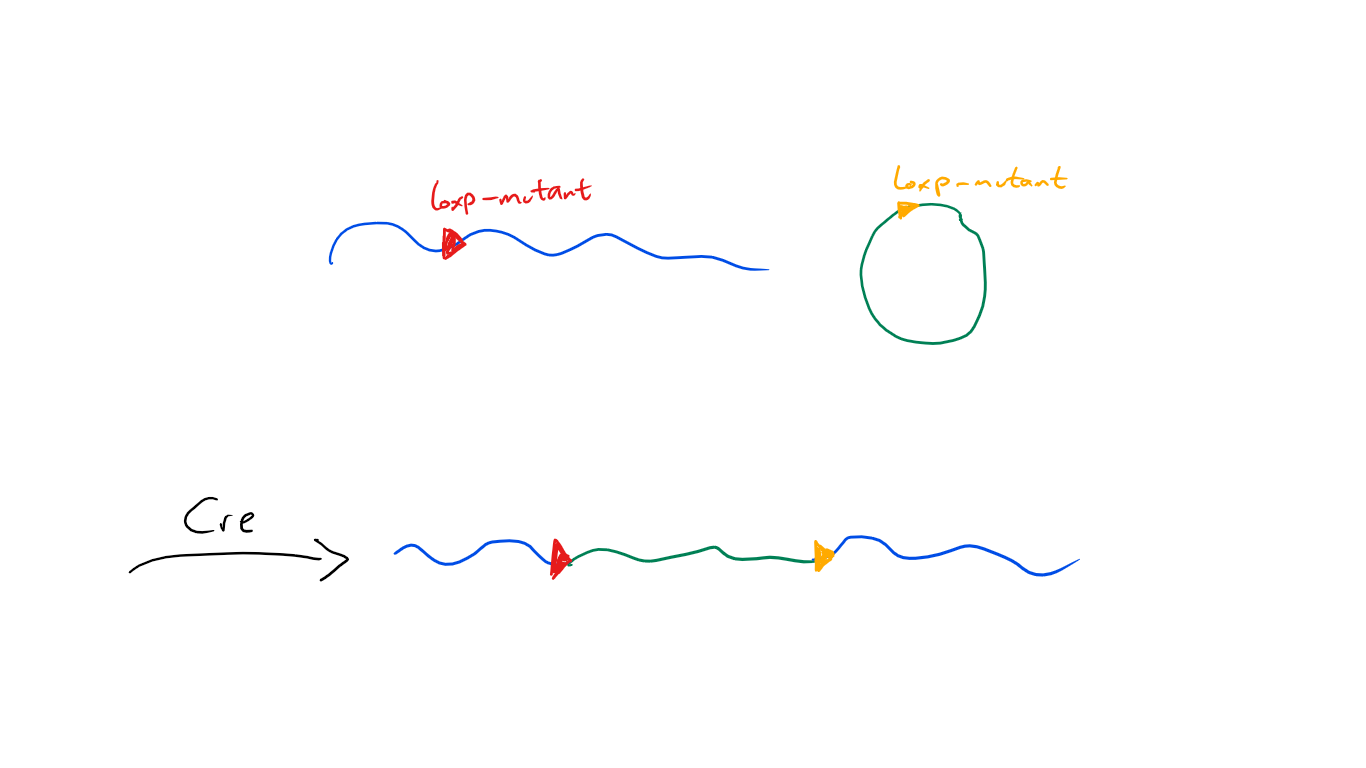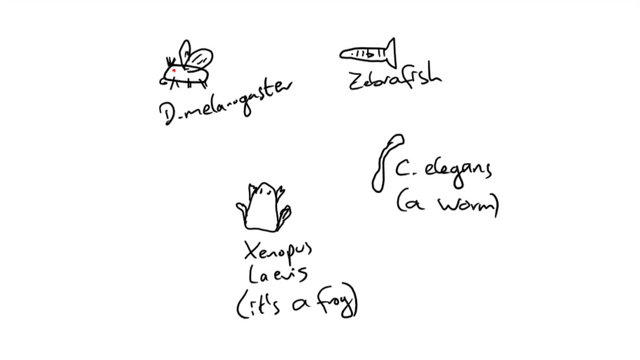Gene Editing - Cre/loxp (My Research, Vol. 2)

“Genetic modification”, “genetic engineering”, “transgenic animals” and “genetically modified organisms” are still very scary terms for many people. And while GMOs are not necessarily bad and those that are introduced to our environment are generally tested to be safe, there is still a lot of misinformation and fear.
Especially with the rise of CRISPR/Cas9 (about which I will make a post too), people are worried. What will happen? What devastating changes will researchers introduce to nature? Will we all die?
Well, yes, we will all die. But we’d do that without genetic engineering too, maybe even a lot faster.

Many breakthroughs show a promising future where we can fight cancer by simply reprogramming our own immune system, grow organs in animals (or even directly in a petri dish!), repair genetic diseases before the child is even born and more.
And I have a rather positive outlook on this, because of mainly one reason: Every researcher I met so far, online or in real life, professor or undergraduate student, aimed to do something to improve the world we live in. Sometimes for personal gain (I mean come on, how often have you put in hours upon hours of work for something completely altruistic?) but still with this as motivation.
What I actually want to talk about
Genetic manipulation is super old. The most basic one is probably selective breeding and has been done by our ancestors since the advent of agriculture. After that came a random approach, where scientists just dumped chemicals on plants or used radiation to create mutations and then checked what the effects were. @suesa
But even before CRISPR/Cas9, there were ways to manipulate the DNA of organisms - obviously, because CRISPR/Cas9 is only about 6 years old.
One of these tools for DNA editing is the Cre/Loxp system which comes from a bacteriophage. That’s a virus that only attacks bacteria.
Cre (“Cre recombinase”) is an enzyme that can direct the recombination of DNA sequences, which can be a deletion, insertion, translocation or inversion. For that, it needs so-called “Lox sites”, which are short regions on the DNA with a very specific look.
The system is a bit complicated to understand, so I’ll just show you how the deletion and the insertion works.
Deletion
For a deletion, the gene has to be located between two loxp sites. Upon activation, Cre causes cuts in the DNA which are then “sealed” again, which effectively cuts out the gene.

Insertion
Technically, insertion is just the opposite of the deletion, but the system favors deletion over insertion. To avoid a deletion of a previously inserted gene (which would be super annoying), researchers have created mutated loxp sites.
Each loxp site has a “core”, a “right arm” and a “left arm”. If one of these arms is mutated, Cre can still do its job. But if both are mutated, the “cut out” process doesn’t really work anymore, which makes the change stable.

But why?
Sometimes, you just need to make a green fluorescent mouse. Other times, you want a mouse that can’t smell (fun fact: completely deleting a mouse’s sense of smell takes away all aggression and it’s a lot easier to keep several males together in groups).
Jokes aside, if you want to look into how a disease works and want to use an animal for testing, the animal needs to have that disease. Would be a bit pointless otherwise, no?
Especially genetic diseases can easily be induced by damaging or removing a gene. For others, you have to introduce new genetic material. Cre/loxp works so well, that it’s standard procedure in most labs that work with animals. And it doesn’t just work with mice! As far as I’ve seen, you can use it in every one of the usual model organisms (Drosophila melanogaster, zebrafish, Xenopus Laevis, C. elegans, …).

And the great thing is, it’s very specific. An animal’s genome (and our genome too!) usually doesn’t contain any loxp sites, which makes accidental changes (= “off-target hits”) very unlikely - in contrary to CRISPR/Cas9. And it’s less complicated to use too.
Some labs try a combination of the two: Using CRISPR/Cas9 to create a loxp site and then adding Cre to cause a recombination, specifically targeting the loxp site with Cas9, the possibilities are endless.
And you know what? It’s not the only way to change a genome. Even the Cre/loxp system has a lot of different ways to do things.
Sources:
Cre recombinase: the universal reagent for genome tailoring.
Accumulative gene integration into a pre-determined site using Cre/loxP.
Previously:
All about the Sperm-DNA - Vol. 1
Pictures are mine, if not indicated otherwise

Genetic engineering and modification is now beneficial for the world. Many foods are produced through this method.
How I love people who vote their own comments.... Easiest way to lose all my respect.
And the fact that diseases or deformations could be avoided is very pleasing!
Only recently did I learn that there is a difference between genetically modified and genetically engineered foods.
I'm wondering how mice without the sense of smell would react when confronted with the Maroilles, cheese from Northern France that smells even when ordered at the opposite side of the restaurant.
Special Like for Drosophila :D
Right XD
I'd love to see some lab pictures in a future post, I never had the time to research on how gene editing is actually done - I mean in practice.
This is such an interesting topic and i'm loving your series on it :-D
Gene editing is a bit anti-climactic and is mostly imagination and your own knowledge.
Example: Mix a drop of this colorless liquid with a drop of that colorless liquid. Put that colorless liquid into cells. Wait a week or so for the cells to divide so that you have more of them, then check if the cells got the desired genetic modifications. So it is important that you have the knowledge of what components are inside each of the previously mentioned colorless liquids and what they are doing, but otherwise it looks the same to the observer.
I know this because I do it almost every day in human pluripotent stem cells.
I recently saw a woman who was carrying her mechanical heart in a backpack. May be it's not so far when people will start using mechanical or bionic organ.
This is educative, I've always been in interested in genetics, in fact if I had my way I would have studied genetics in the University. Thanks again
To bad you were born in Nigeria.
I think they help... GMOs I mean. They are the easiest way to feed the growing appetite of this universe. Especially war torn nations and the poor. Those who aren't allowed to farm or can't farm. How else will we feed them?
Genetic engineering. Is that the thing that if I'm an engineer, my son has a 50% chance to become an engineer - and if I get a baby with another engineer, our child will become an engineer with 100% probability?
Exactly.
Maybe children with disabilities should be able to sue their parents for not preventing it out of sheer stupidity.
Very interesting how you explained this technique! The Cre/loxp system is a great method that has been used for many years and as you poninted out it is much more precise compared to newer modification methods such as CRISPR/Cas9. What do you think about its handling? I think in this regard CRISPR is advantageous. There is actually a modification of the CRISPR/Cas9 system called CRISPRi/a which does not edit the genes itself but modifies the gene regulation. I recently wrote about it, maybe you like to check it out.
I've just read three papers and a 125 pages ebook about crispr, I'm not sure if I can take it anymore 😅
@schay and @suesa send me any CRISPR/Cas9 questions you have. I use it every day to make new human stem cell lines.
Good to know! I'll be using it to create a loxp site in a specific gene of mice. I'll message you when it doesn't work :D
Wow! That is quite some research on CRISPR. I can imagine, you had enough.
Yes, yes but, could you make a tomaco?
Nice drawing :)
Tomaccos are actually super easy, highly toxic and have been crated before!
Aww.
https://www.wired.com/2003/11/simpsons-plant-seeds-of-invention
Lol, that's crazy.